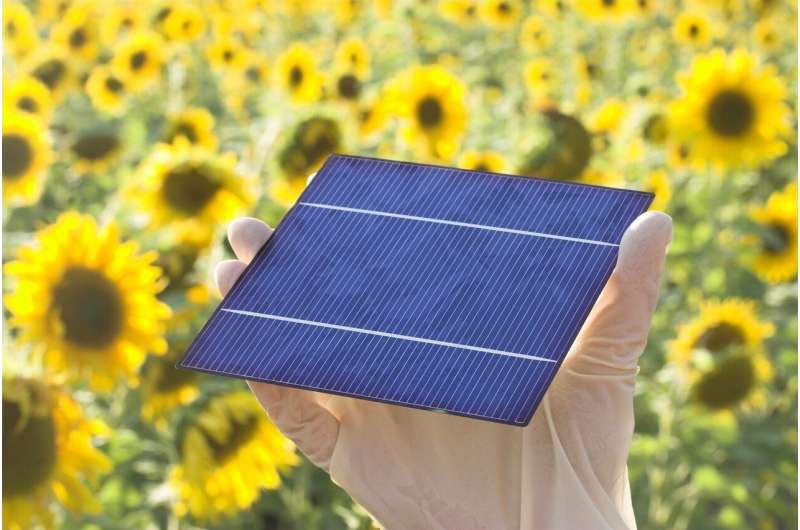This article has been reviewed according to Science X's editorial process and policies. Editors have highlighted the following attributes while ensuring the content's credibility:
fact-checked
peer-reviewed publication
trusted source
proofread
'Self-healing' solar cells could become reality

Solar cells of the future could be able to withstand corrosive susceptibility by "self-healing," in a break-through the scientific community has long been pursuing.
The breakthrough could pave the way for more reliable and efficient perovskite solar cells, contributing to the global transition towards sustainable energy solutions.
Highly efficient, lightweight, and cheap, perovskite solar cells are expected to play a leading role in the future of solar energy production, but scientists still need to make them more durable and figure out how to produce them on a larger scale.
A study published in Nature reveals a novel strategy to enhance the stability and performance of perovskite solar cells (PSCs) through a mechanism described as "self-healing."
Researchers from Monash, the University of Oxford, and the City University of Hong Kong developed a novel strategy to enhance the stability and performance of perovskite solar cells (PSCs).
The innovating agent they developed dynamically heals the perovskite layer when exposed to environmental stressors such as moisture and heat, ensuring sustained device performance and longevity.
Their game-changing approach resulted in solar cells with 25.1% power conversion efficiency and remarkable stability under 1,000 hours of accelerated aging tests at 85°C and simulated solar illumination.
"This work addresses critical issues related to defect passivation in perovskites that have hindered widespread adoption of this promising technology," said Professor Udo Bach, study co-author and Director of Research Department of Chemical and Biological Engineering at Monash.
"Our slow-release strategy represents a significant advancement in the field of perovskite photovoltaics. By slowly releasing the passivating agents into our perovskite material, we have been able to produce solar cells not only with enhanced performance but also extended long-term stability under real-world conditions."
"This breakthrough could pave way for more reliable and efficient perovskite solar cells contributing to the global transition towards sustainable energy solutions."
More information: Wei-Ting Wang et al, Water- and heat-activated dynamic passivation for perovskite photovoltaics, Nature (2024). DOI: 10.1038/s41586-024-07705-5


















